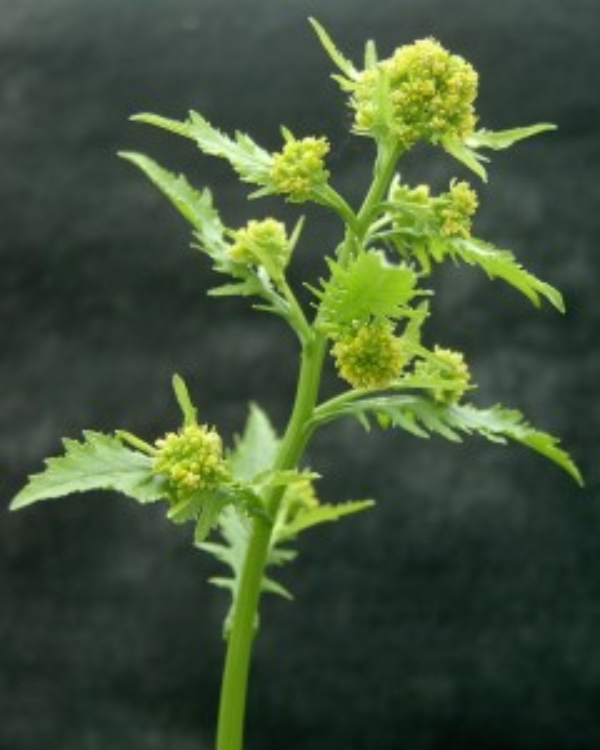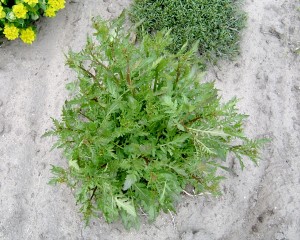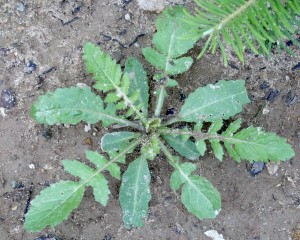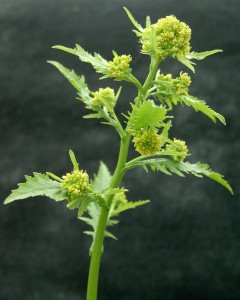
Marsh yellowcress – Rorippa palustris
Rorippa palustris L. (Bess)
Brassicaceae (Mustard family)
MI Status
Native
Life cycle
Taprooted annual or biennial. Occasionally, a weak perennial.
Leaves
Alternate, variably shaped leaves initially develop from a basal rosette. Leaves are deeply lobed with a large terminal lobe and three to seven other lobes. The upper stem leaves are smaller with lobed to toothed margins and, occasionally, winged petioles with earlobe-shaped bases.
Stems
Branched or unbranched stems arise from a basal rosette to flower, usually less than 2 feet in height.
Flowers and fruit
Small, light yellow flowers with four petals are found in terminal clusters. Fruit are small, globe- to short cylinder-shaped capsules with a slight upward curve. Each capsule contains numerous, tiny, yellowish brown seeds.
Reproduction
Seeds.
Similar weeds
Yellow fieldcress [Rorippa sylvestris (L.) Bess.]
Differs by having a perennial nature with prolific, aggressive creeping roots and more deeply lobed leaves. Flowers are more conspicuous and brightly colored. Capsules are smaller and usually do not contain seeds.






 Print
Print Email
Email




